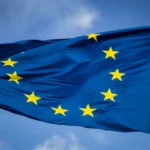By Ken Ebert
When it comes to verifiable credentials, writes travel expert Mitra Sorrells, “there is little doubt that travel – as well as many other parts of everyday life – is on the verge of a fundamental, radical shift.”
For travel, that means a special kind of verifiable credential, called — unsurprisingly — a Digital Travel Credential or DTC. A DTC is based on standards from the International Civil Aviation Organization (ICAO) for creating digital equivalents of a passport.
In essence, a DTC is a digital version of a passport that a passenger creates by scanning their passport with an app on their smartphone. The app reads the information on the photo page of the passport in order to read the data in the passport chip and then checks the cryptographic information that proves it was issued by a bona fide passport authority. In addition, the app asks the passport holder to perform a biometric and liveness check that is then checked against the digital image in the passport’s chip. Only after all this checks out is a traveler issued a DTC.
The combination of cryptographic verification and biometric binding means that a government can be confident that the digital version of a passport is authentic, and belongs to the passport holder.
This is only a first security step. When a DTC is built on a verifiable credential it gains privacy and security superpowers (and this is why anything claiming to be a DTC that isn’t a verifiable credential isn’t really a DTC).
A verifiable credential is 1) a way of “sealing” information such that if the information is altered, the seal breaks, and 2) a way of sourcing information so that you can be absolutely certain of where it originated and who it came from.
Technically, there are new global standards and protocols and multiple layers of cryptographic wizardry — complex math — triangulating digital information so it can’t be copied, altered, or used by someone else.
The result is the most powerful digital identity anyone has yet created – one that meets the standards of security that governments expect when it comes to protecting borders.
And what can we do with this power? We can simplify the way information is used and verified so that processes and operations that were complicated, stressful, or just too difficult to do because of the risk, now become easy, instant, and secure.
Here are three ways a DTC simplifies travel:
The journey: Because airports, airlines, and governments can be confident that a person presenting a DTC is who they say they are, anything that once required manual checking can be automated. Travelers can be authorized to travel long before they leave for the airport. Airlines can quickly board passengers, certain that they are allowed to visit their destination. Borders can be crossed in seconds. All the congestion that currently slows down and stresses out travelers can be smoothed away.
Privacy: DTCs and verifiable credentials do something radical that was previously impossible: they allow people to hold their personal data on their mobile device in a way that only they can access. Until now, personal data had to be stored in centralized databases by verifying parties in order to authenticate a person’s identity. This has turned into an enormous privacy and a security risk. But because a verifiable credential means you can be certain of the source of information and that it hasn’t been tampered with, this centralized model of identity access management is no longer needed, addressing many of the critical issues in data privacy and protection laws like GDPR.
Security: Governments can do security and immigration checks ahead of travel. Airlines can be certain that all their passengers are allowed to visit the countries they are flying to, avoiding fines and repatriation. Manual document checks are replaced by cryptography. And, of course, the risk of centralized data storage has been mitigated.
There are two other important opportunities that this technology creates. By removing friction and lines, airports can increase flow and capacity without increasing resources. This is critical as air travel is projected to keep growing.
Verifiable credentials also expand the scope of customer personalization. In addition to being trusted digital identities, verifiable credential technology comes with its own way of communicating. It’s direct, one-to-one, and encrypted. This means each DTC has a consent-based way to create a secure trusted relationship with a traveler and take loyalty programs and service integration to the next level (again, this is why it’s important to make sure DTCs are verifiable credentials and not just fancy digital certificates).
In short, DTCs and verifiable credentials benefit everyone in the travel and tourism sector. And that’s because they rewire the way information travels so that it gets us to where we want to go, faster, more smoothly, and more securely.
For more information about verifiable credentials and digital travel, please visit us here or contact us.
###






